Potsdam borders directly on Berlin. A city trip to Potsdam thus offers the opportunity to visit the capital of Brandenburg and the capital of the Federal Republic.
Potsdam offers its visitors a wonderful cultural landscape with its palace, parks and gardens. It is not without reason that UNESCO included it in 1990 as the largest ensemble of German World Heritage Sites in the list of the World Cultural and Natural Heritage of Humanity. But it is also worthwhile to plan a visit to the Holländer Viertel and the former BUGA grounds.
Excursion tips in and around Potsdam
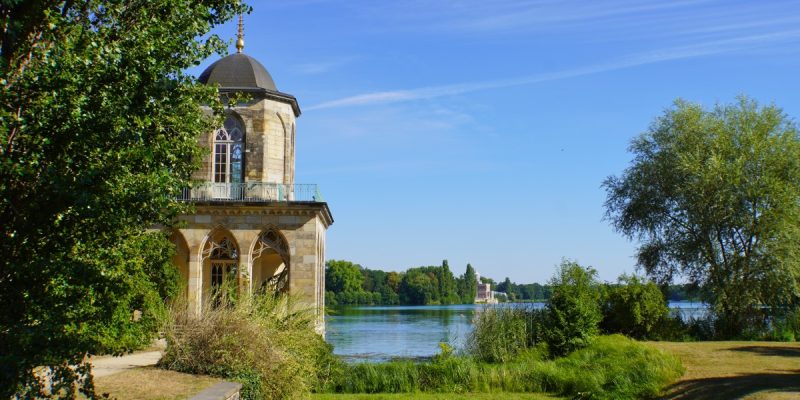
Integrated into the Potsdam Palace Park, the New Garden in the north of Potsdam is part of the city's UNESCO cultural heritage. The name is misleading, however, because the garden is not that new.
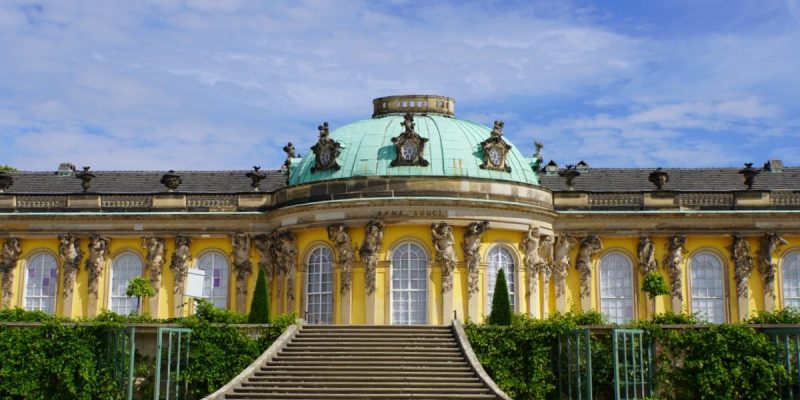
A visit to Potsdam without strolling through Sanssouci Park is only half a visit. The palace park and palace are Potsdam's most famous sights worldwide
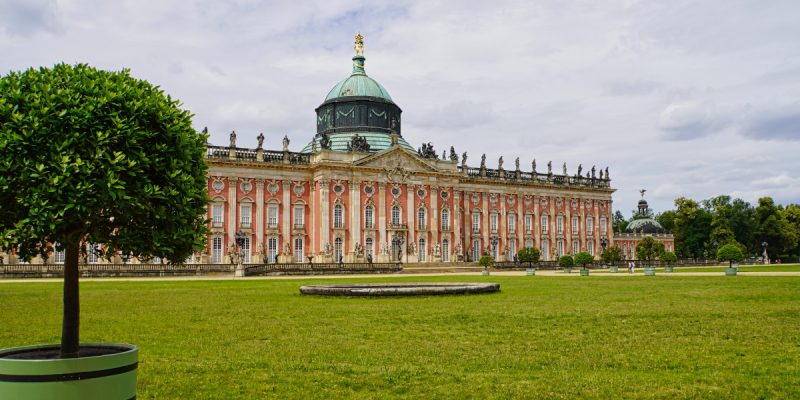
If you walk along the Grosse Allee through Sanssouci Palace Park, you come to the last important Baroque palace complex in Prussia, the Neues Palais in Potsdam. For me, the New Palace with its adjacent buildings is one of the most beautiful buildings in the palace park.
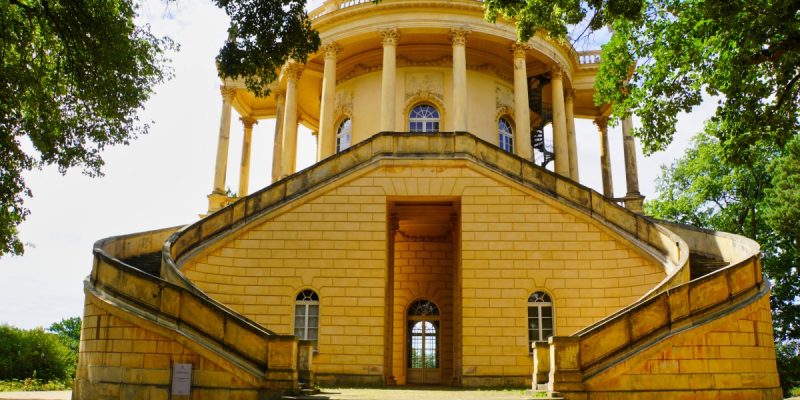
The Belvedere on the Klausberg is a UNESCO cultural heritage site in the Berlin-Potsdam cultural landscape. It is located in the north-western part of the Sanssousi Park.
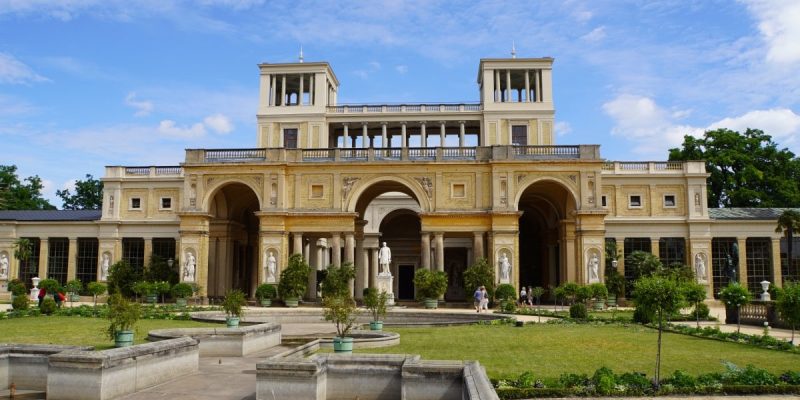
The New Orangery stands on the northern edge of the Sanssouci Park on the Bornstede ridge. However, this does not resemble a huge greenhouse, as is often the case in other parks, but is an impressive complex in the style of a palace and does not bear the name Orangery Palace for nothing.
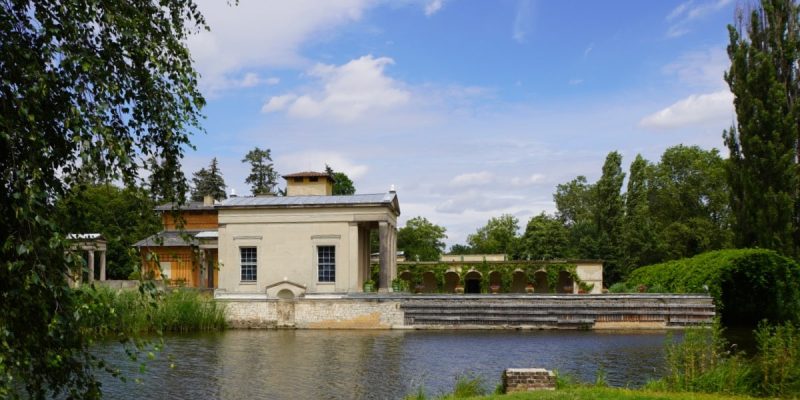
The park of Sanssouci Palace has many surprises in store. Not only beautifully designed parks and extensive paths along shady trees, but also buildings such as the Roman Baths or Charlottenhof Palace.
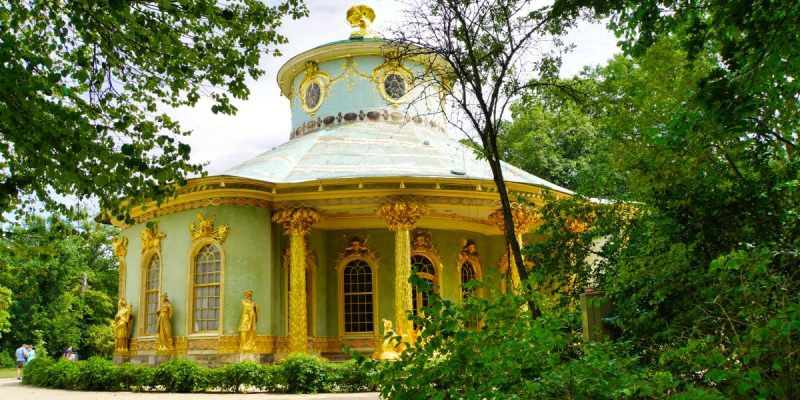
Potsdam is famous for the beautiful summer palace Sanssouci with the palace park and its numerous landscaped gardens. During a walk through the park you can admire the Chinese House and the Dragon House.
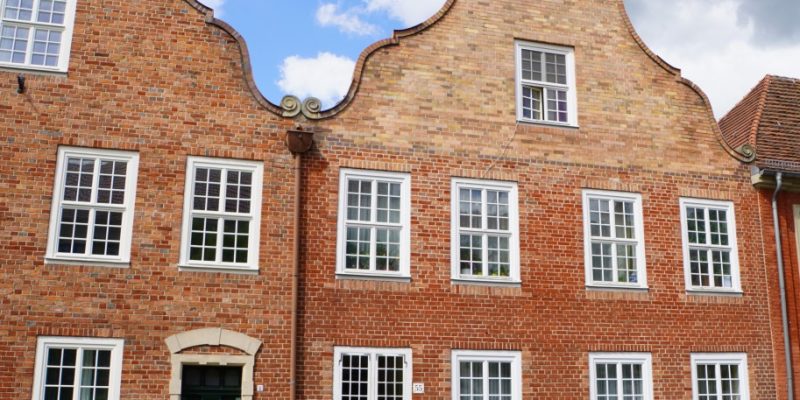
If you walk through Potsdam, you will always see signs pointing to the Dutch Quarter. How is it that a district in the middle of Brandenburg was named after Holland?
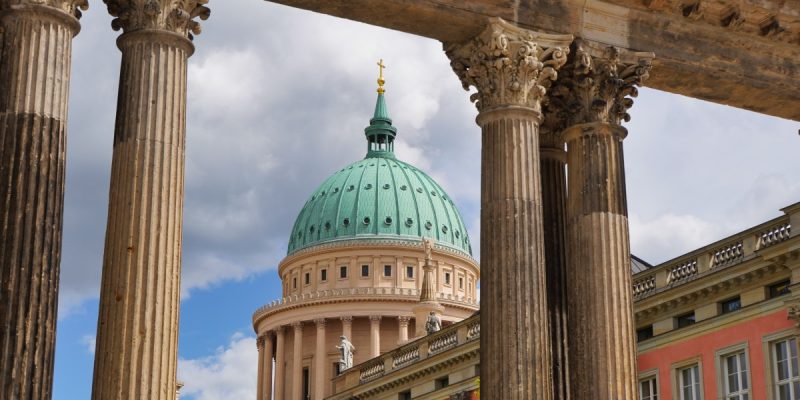
At the Alter Markt in Potsdam stands the imposing building of the Protestant church of St. Nikolai, popularly known simply as the Nikolai Church. The highlight of a visit to the church is the ascent to the dome, which offers a great view of Potsdam.
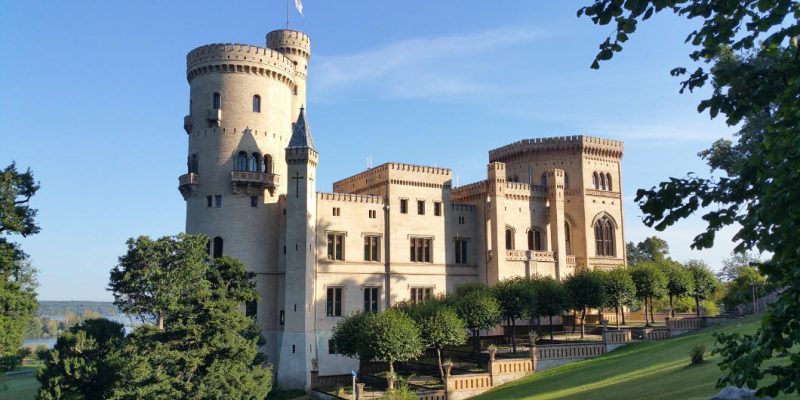
Holger from Berlins Taiga invited me to an extraordinary guided tour with the theme "Park Babelsberg in the shadow of world history" and I was really excited about what to expect.
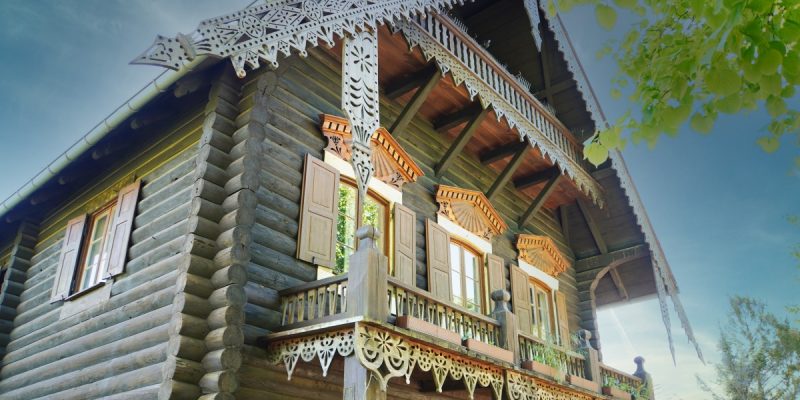
When walking through Potsdam, you shouldn't miss visiting the Russian Colony Alexandrowka. The beautiful wooden houses are truly unique and are even on the World Heritage List.
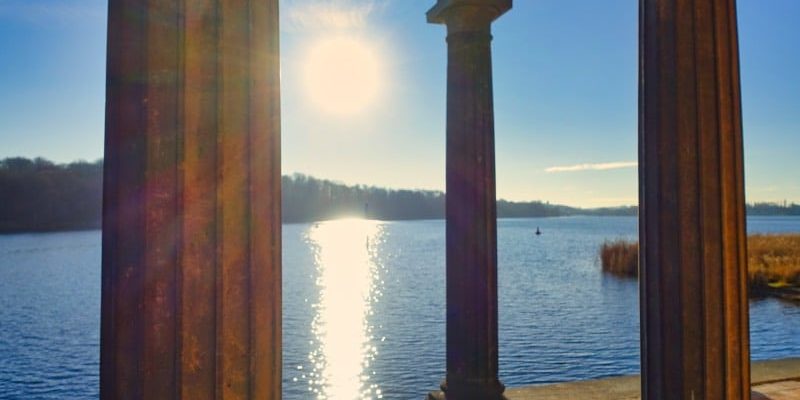
Sacrow is a small town located between Berlin-Kladow and Potsdam in Brandenburg. For us, this was the starting point for a short hike through the Königswald forest along the Sacrower See lake.
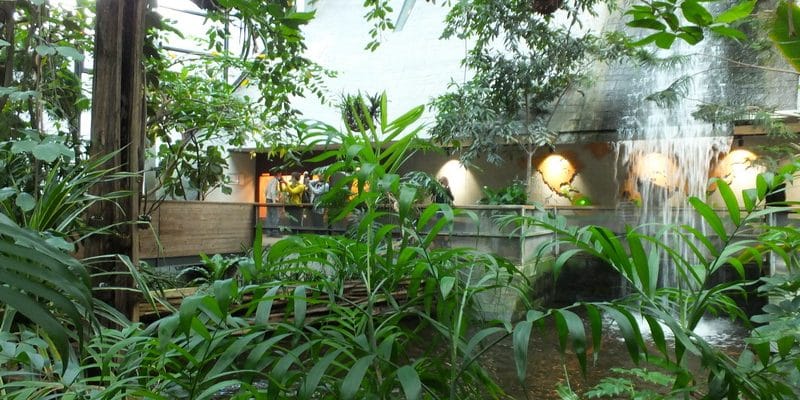
The Biosphere is located in the middle of Potsdam. Here you can experience a vacation atmosphere in the rainforest all year round.
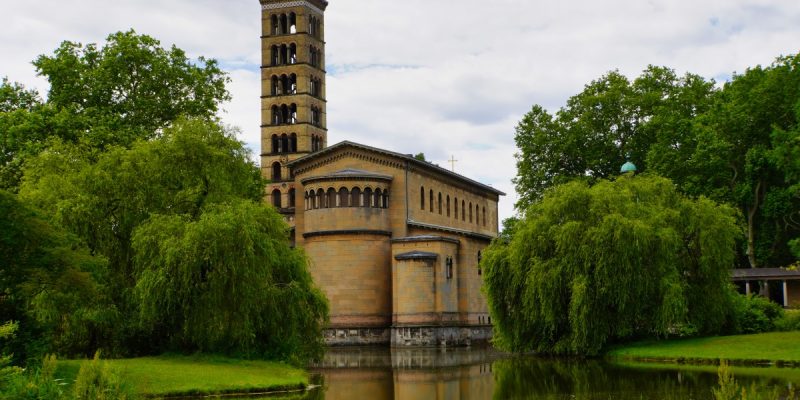
If you enter Sanssouci's Schosspark from the Green Gate, the main entrance, you can't miss the Friedenskirche (Peace Church) in the Marly Garden. It is worth planning a visit, the church is exceptional.
Travel information for a city trip to Potsdam
Arrival
By plane
The international airport Berlin-Brandenburg is located about 40 kilometers from Potsdam. You can reach it by car via the A 10 or with the regional trains RB 21/22 and RE 7.
By train
Potsdam has 9 train stations. From there, regional trains go to Berlin, Brandenburg and Saxony-Anhalt. In addition, the Berlin S-Bahn line S 7 runs to Potsdam.
Potsdam is only connected to long-distance traffic with two connections. If you want to catch an ICE or IC train, you have to go to Berlin’s main train station.
By car
Potsdam is surrounded by the A 10 and A 115 freeways. In addition, the federal roads B 1, B 2 and B 273 lead to and through Potsdam.
By ship
Potsdam can be reached via the Havel River. Those arriving by boat will find several paid moorings on the banks of the Havel. Day visitors arriving by water will find public pleasure boat moorings at the Alte Fahrt or near the Glienicke Bridge. These may be used free of charge between 6 a.m. and 10 p.m.
On foot
Potsdam is located on the European long-distance hiking trails E10 and E11.
On the way in…
By car
During rush hours, traffic jams can occur due to the large number of commuters. These extend to the feeder roads.
Public transport
You can get around Potsdam and the surrounding area very well by buses and streetcars. Numerous connections are offered, some of them with quite dense frequency.
The fares for the tickets are based on a 3-zone model. The exact price levels and fares can be found here.
Tickets are available from the ticket machines on buses and streetcars.
On foot
The historic city center around Brandenburger Straße and the Holländerviertel can be explored very well on foot.
Along the Havel River and the lakes run for the most part well laid out paths that invite you to take a walk.
By boat
Potsdam has a municipal ferry line (F1) that can be used with regular public transport tickets. It runs between the Hermannswerder peninsula and the Kiewitt in the Brandenburg suburb and can only be used by pedestrians and cyclists.
The Potsdam Water Taxi can be used by pedestrians and cyclists. It travels on the Havel River and stops at 13 stations.
You can take excursion trips on the Havel with the Weiße Flotte Potsdam GmbH.
By bike
For several years, the city has invested funds in the development of bicycle routes. Thus, one can find numerous well-built paths, but not yet a complete network of bicycle paths in the city.
Parking
In and around the city there are Park&Ride parking lots, from which you can easily get to the city by public transport:
- at the station Pirschheide, in the west at the B1 to Werder (Havel)
- at the station Rehbrücke, in the south at the stop of RE7
- at Johannes-Kepler-Platz, in the suburb Am Stern in the southeast
- at Griebnitzsee station, at the S-Bahn line in the east
- at the Babelsberg park and castle in Babelsberg
- at the Buga Park/Volkspark, in the north at the B2 in the direction of Spandau
In the city center, parking spaces are almost exclusively offered for a fee. The further you get towards the city center and Brandenburgische Strasse, the more expensive the parking costs become. In the meantime, it is possible to pay parking fees almost everywhere with a dm cell phone.
In addition, there are about 13 parking garages of different providers in the central area.